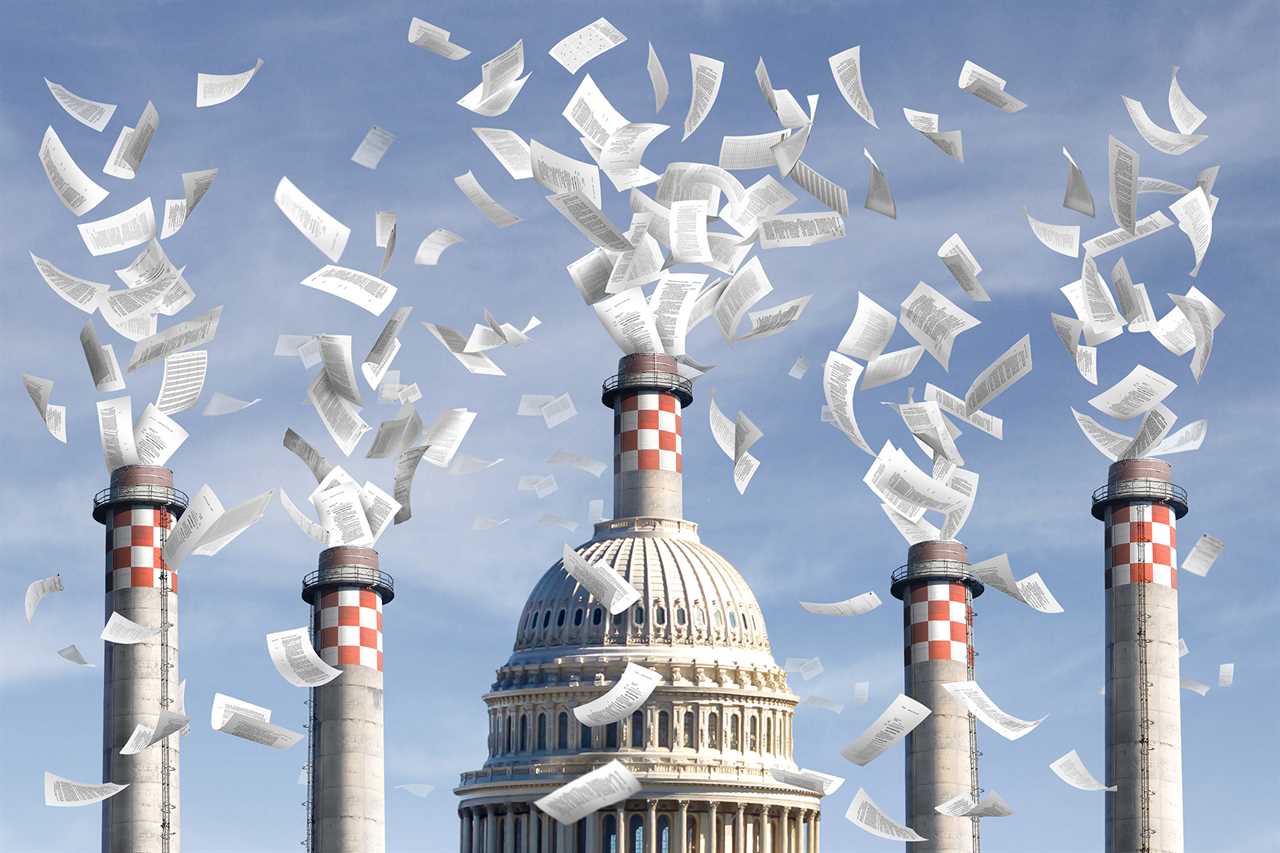
Named for the friend of a French king, Louisiana’s Lake Maurepas is a large tidal estuary at the confluence of four rivers, a geographic lace-hole in the boot-shaped state. Today, it’s known mainly for shrimping. But if a company called Air Products gets its way, the 93-square-mile expanse will also be the setting for a mile-deep pool of carbon dioxide, a project aided by the Biden administration’s big bet on carbon capture technology.
Many Louisiana residents are big supporters of the oil and gas industry, but they worry about the idea of using relatively untested technology to pump 5 million metric tons a year of carbon dioxide — more than what 1 million cars emit in a year — into a cavern underneath the smooth waters of their lake. Kim Landry Coates, a council member of neighboring Tangipahoa Parish, said many of her constituents are concerned about burying the colorless, odorless gas that, in high concentrations, can choke people unconscious. Or worse.
One thing is particularly worrisome, Coates said. And that’s the fact that the Environmental Protection Agency, the part of the federal government currently tasked with analyzing applications to store carbon dioxide underground, is looking to pass that job to the Louisiana Department of Natural Resources. The department has said it has so few employees with expertise in the matter that it will have to outsource positions.
“The oversight and making sure things aren’t going to go really bad is a huge concern,” Coates said. “I don’t think they will be equipped.”
The people of Tangipahoa Parish are hardly alone, as chemical companies rush to claim $12 billion authorized in the Inflation Reduction Act to create massive underground storage structures for potentially deadly carbon. Already, hundreds of applications are flowing into state and federal authorities for what some industry analysts estimate could become a $4 trillion industry by 2050. But a three-month POLITICO investigation shows that both the federal government and the states are far short of the resources necessary to properly investigate and ensure the safety of a dangerous emerging technology.
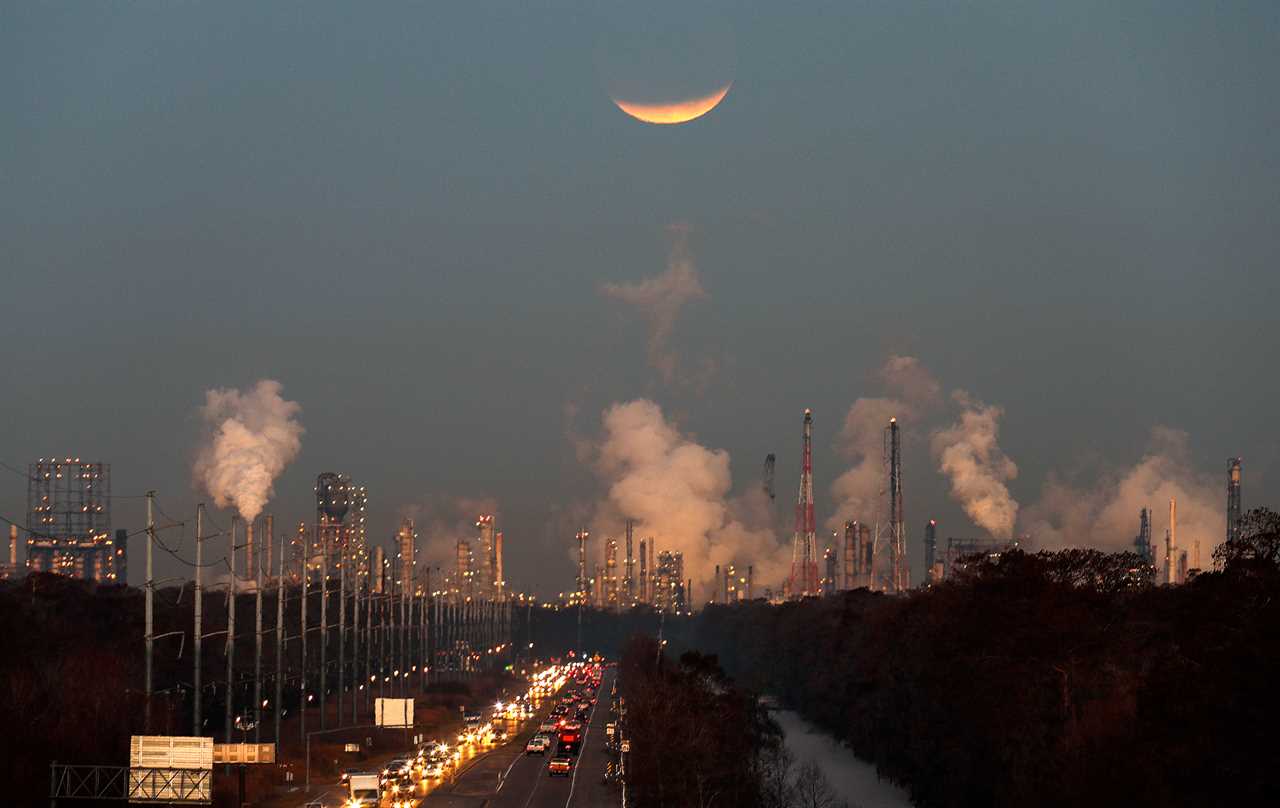
The EPA itself has received at least 75 applications for carbon capture permits, with dozens more expected in the pipeline. They would pump millions of tons of carbon dioxide underneath places as varied as Biloxi Marsh, a salt-water marsh popular with bird-watchers and hunters in Louisiana, and the Houston Ship Channel, an industrial zone inside the largest city in Texas. But so far, the EPA has only been able to process two. It is now negotiating with states to take the job over.
Louisiana, one of those states, says it has three people ready to move those applications and will have to hire and train triple that number in the first several years to meet the demand. Regardless, EPA last month took the first step toward letting Louisiana control permitting of wells to store CO2. Another state looking to take over for the EPA, Texas, would put the job into the hands of a three-person commission, the Texas Railroad Commission, with a history of being dominated by the oil, gas and mining industries it oversees. (Contrary to its name, the commission no longer regulates railroads.)
Ashley Watt, a rancher with land scattered in the Texas panhandle and the Permian Basin, the oil-producing scrubland in the western part of the state, is negotiating with a company that wants to bury CO2 on her property. The former Marine Corps captain and Harvard Business School graduate is relying on her own lawyers to make sure any contract contains language protecting her if the well leaks, and she fears the railroad commission won’t have the expertise to do much more than rubber-stamp applications.
“It’s like giving a toddler who’s really into trucks a full-sized 18-wheeler and telling them to have fun on I-10,” Watt said of the EPA making the commission responsible for the safety of carbon sequestration wells. “They are going to crash into everything. They are not technical people. They don’t have the technical expertise.”
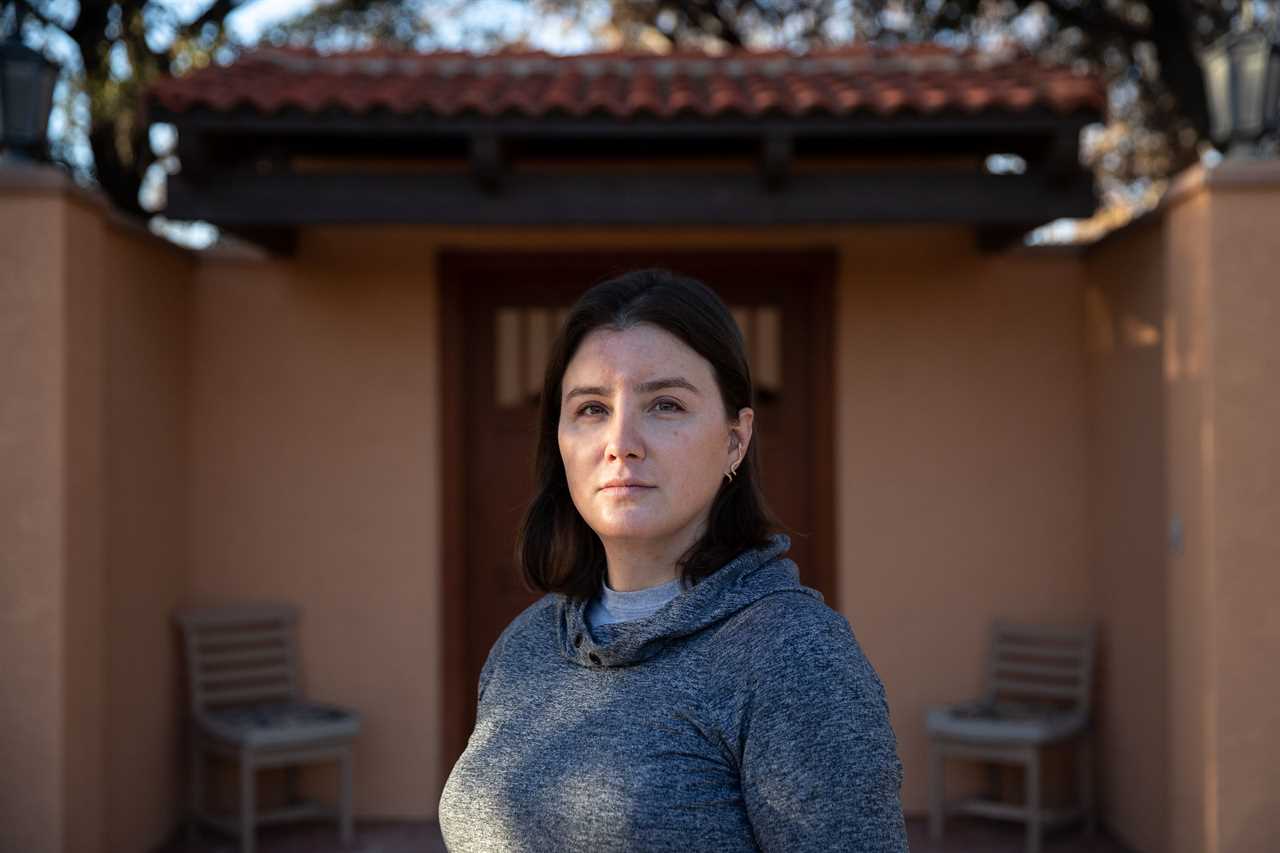
The result, according to both environmental officials and carbon capture experts, is that many of the projects are likely to face either serious delays while waiting for safety assessments or — worse — be waved through with less than thorough scrutiny.
The EPA did not respond to questions about the safety of carbon storage and the size of the agency’s program to monitor it.
Some climate activists — who’ve long claimed that carbon capture is merely a way to perpetuate a fossil-fuel economy — say the lack of regulatory apparatus is a sign of rushed decision-making. And they say it could put low-income residents and communities of color at risk, despite the Biden administration’s pledges to address historical disparities in how environmental burdens are distributed.
“For the most part leadership in both parties is aligned around trying to deploy as much [carbon capture] as possible, despite what the potential environmental justice impacts will be and despite considerable concerns about the technology and accountability, safety and security concerns,” said Tyson Slocum, director of the energy program at the progressive consumer advocacy group Public Citizen.
Even government officials trying to get these projects to fruition are a little unsure about how this will play out given the lack of bodies behind the relevant desks.
“It’s tricky because this happened in a way that we weren’t super prepared for in a federal policy perspective,” said Shuchi Talati, who until last April was chief of staff in the Energy Department’s Office of Fossil Energy and Carbon Management, which is handling billions of dollars for carbon capture grants and subsidies. “I hesitate to call it a bottleneck. It’s just going to take some time.”
Funding a technology that’s unproven at scale may be a massive gamble, though it’s one that only the U.S. government has the wherewithal to make, said Samantha Gross, who was director for international climate and clean energy at the Energy Department’s Office of International Affairs during the Obama administration.
“There's some risk associated with the investment, but I think it's a risk that’s totally worth taking,” said Gross, who now directs the Energy Security and Climate Initiative at the Brookings Institution. “You want to take some risk — that’s the point. It’s a technology that we need.”
A huge bet
The money Congress approved is staggering. The bipartisan infrastructure law funded $6.5 billion for technology to capture carbon, pull it from the air or store it underground, another $3.5 billion for carbon capture demonstration projects and $2.1 billion to build pipelines to transport CO2. All that would go into an industry that research firm Allied Market Research estimates as having only $2.1 billion in global market capitalization.
Those are just the direct subsidies. Just as importantly, the Democrat-passed Inflation Reduction Act strengthened a key tax credit that expanded carbon capture’s viability across many sectors, including cement and steel.
The technology is advertised as being able to scrub carbon dioxide and other pollutants from industrial processes before they can reach the atmosphere and trap the heat raising the Earth’s temperature.
Carbon capture may be the only real way to cut emissions at heavy industry sites, where switching to renewable energy is not yet an option. But while the underlying technology has been used for years, it has yet to take off at a huge scale. Only 13 commercial carbon capture sites are in operation in the U.S., said Jessie Stolark, executive director of the Carbon Capture Coalition, a group of oil and gas, tech, environmental and policy groups that back the technology.
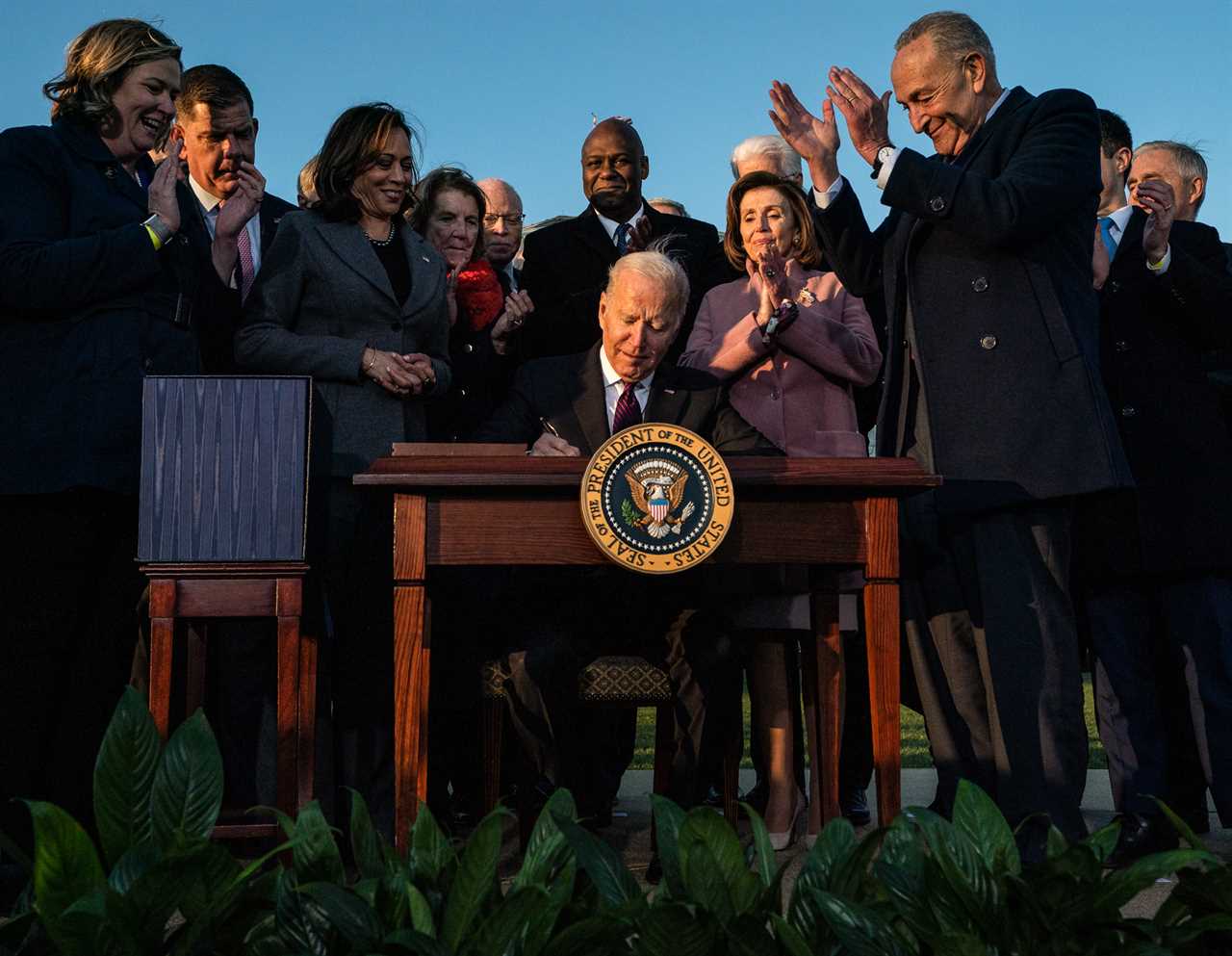
Now, though, the government’s plans call for a vast expansion of carbon capture across multiple industries. And on Thursday, the technology formed the cornerstone of the Biden administration’s newly released plan to slash planet-heating gases from the electric grid, the nation’s second-highest source of carbon pollution, even though no power plant in the country uses it at commercial scale.
“We are talking about a step-change in terms of scale and scope of deployment of this technology,” Stolark said.
Companies use chemicals or other material to strip carbon dioxide from exhaust streams at industrial sites, shipping CO2 via pipeline to underground caverns — “sinks” — for permanent storage. Oil drillers have for years injected captured CO2 into old wells to force out the last drops of crude.
But the regulatory snags at the federal and state levels have the technology's backers and critics equally agitated. In many ways, whether the world's largest economy and greatest contributor to climate change can achieve its goal for slashing greenhouse gas emissions hinges on something both immensely bureaucratic and dire for the fate of the planet.
“This really is the moment of truth — the next three to five years — on the technology,” said National Wildlife Federation CEO Collin O’Mara, a President Joe Biden ally and rare green supporter of carbon capture for some uses. “We need the technologies to work, and we need them to work now.”
‘Sort of a land rush’
Companies whose carbon capture ambitions once extended only to a sort of greenwashing — putting up billboards in Houston advertising the technology without actually having projects planned — have started to get serious, said Charles Fridge, CEO of Verde CO2, a Houston-based company that has worked in carbon capture since 2019.
“Since that time [of the IRA passing], we’ve had probably a quadrupling or greater number of competitors,” Fridge said in an interview. “It’s been a sort of land rush. Emitters are recognizing the former trash they were emitting into the air is now a treasure. It was previously something they were ashamed of, a byproduct. Now it’s a currency.”
Communities near the proposed projects aren’t so sure that the miles of new pipelines and underground caverns full of noxious gas won’t leave their landscape scarred and their air quality in danger, especially if the carbon capture facilities don’t result in cleaner emissions. Regulators in Washington, D.C., are providing plenty of money for the new industry, but are essentially passing the buck to states in the Midwest and Gulf Coast when it comes to oversight, these critics say.
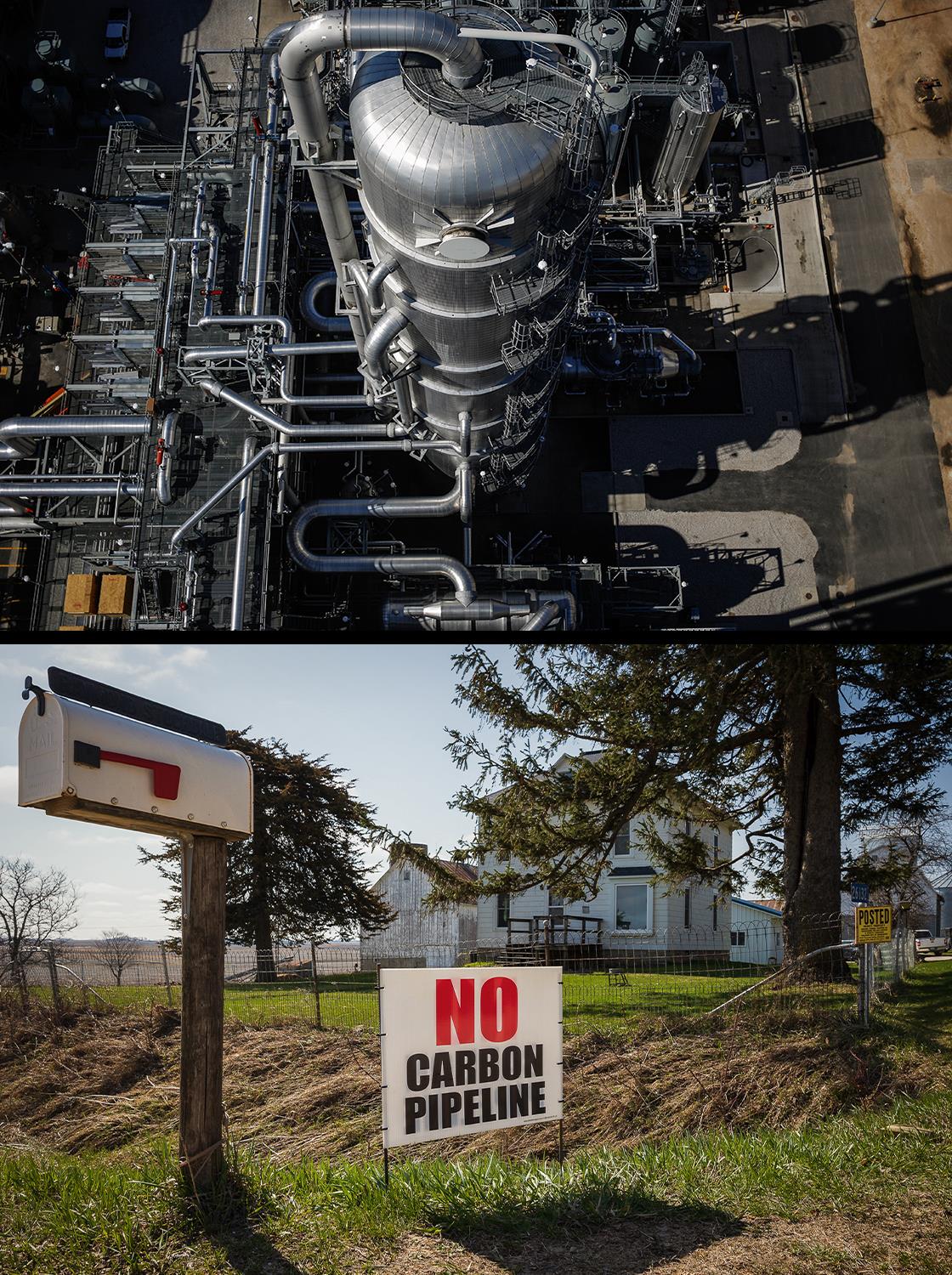
Part of that is because the manpower no longer exists at the federal level. At about the same time the Trump administration and Republican lawmakers cut the EPA to the bone, Congress gave the agency a mound of paperwork.
In 2018, the carbon capture industry rejoiced when a long-sought tax credit came to life. Known as 45Q, it was a financial salve that turned carbon dioxide — at that point merely a waste product — into a bankable commodity. Companies announced multimillion-dollar projects. Big oil firms got in on the action. Start-ups sprang up.
EPA wasn’t prepared. The tax credit sparked interest in a complicated type of well to permanently store CO2 underground, inundating the small team handling the underused program.
EPA has met with more than 100 companies and “other interested parties” about so-called Class VI wells since Congress passed the 2018 revisions to 45Q, the agency said in an October report to Congress. Companies using those wells receive $85 per ton of stored CO2 compared with $60 to inject CO2 to turbocharge oil and gas drilling.
Yet through January, EPA had issued just two Class VI permits that ever made it to the injection phase. Both took six years.
EPA said in a report that it expects the bipartisan infrastructure law passed in 2021 to generate 100 Class VI applications. It claimed permit processing takes two years per well, on average.
Industry advocates have pushed EPA to hire more staff. While companies have announced intended projects, those amount to glorified press releases, said Rich Powell, CEO of the cleantech policy group ClearPath. He said delays will prevent companies from lining up final investments.
“It cannot take six years to permit these things. It will destroy all opportunity,” Powell said. “That I think today is the biggest hold-up.”

So Congress and companies pushed the EPA to go a different route: Letting states handle permitting. Lawmakers even gave EPA $50 million in 2021 to speed permits and applications for “primacy” to give state and tribal governments control.
But that move troubles locals. Many say state governments are even less ready or willing to oversee the safety of injecting massive amounts of carbon dioxide into the ground.
EPA is vetting the Texas Railroad Commission to handle the permits for carbon sequestration wells. But that body, which oversees the state’s oil and gas industry, has faced constant criticism for rarely turning down a company’s request for a permit.
The elected commissioners receive hundreds of thousands of dollars in campaign contributions from the oil industry. The commission has failed to prevent oil companies from emitting massive amounts of planet-warming methane, or injecting so much waste water underground that earthquakes have become a part of Texan life, critics contend.
Thus, environmental advocates and private property owners have little trust that the commission will be effective in regulating underground carbon dioxide wells that are set to multiply in the state.
“I’m pretty sophisticated,” said Watt, the Texas landowner. “I hire more lawyers than I care to admit. The problem comes when you start getting companies paying [landowners] for quick contracts.” Landowners without their own lawyers to customize contracts would have to put their trust into whatever regulations the state sets, she added.
Texas Railroad Commission spokesperson R.J. DeSilva defended the agency’s record, saying it has “a decades-long history of effectively regulating various classes of injection wells to protect public safety and the environment.”
The commission has added staff for the carbon dioxide well work, and will devote additional resources “to continue to meet or exceed requirements for program performance,” DeSilva added. That includes ensuring “that there are no potential conduits for the escape of stored carbon dioxide.”
“The RRC is more than ready for this important work,” he said.
Saying no
In Louisiana, tensions are also running high as local-level politicians and residents express their skepticism that the state’s Department of Natural Resources has the wherewithal to ensure carbon capture projects operate safely.
Locals are used to working with the oil industry, said Coates, the Tangipahoa Parish council member, but their experience in the industry also makes them aware of the dangers of a potential CO2 leak.
“They’re not against the industry,” Coates said. “They’re just seeing through some of the details with the high level of risk and the unproven technology.”
Coates and her constituents aren’t alone. Louisiana’s own officials acknowledge that it doesn’t yet have the expertise in place to process applications for carbon capture projects.
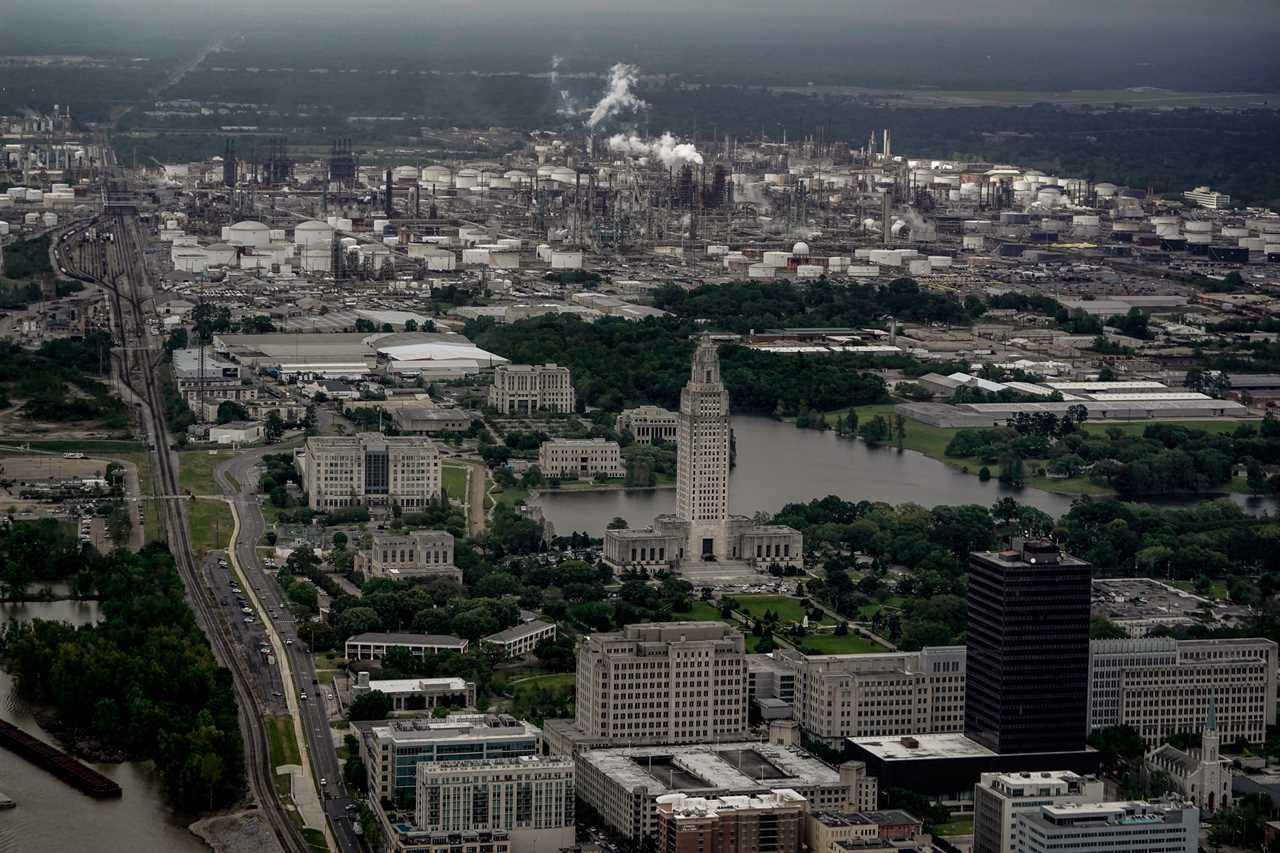
Patrick Courreges, a spokesperson for the state’s Department of Natural Resources, said the state will need to seek outside help analyzing permit applications in the first few years after it takes over from the EPA because of the sheer number of applications expected.
That would only be temporary, as the state recently increased the department’s budget enough to hire more workers, Courreges added.
In all, the DNR thinks its rules governing the wells will be stricter than those the EPA uses, Courreges said.
“We understand people have concerns, and there’s a history” of pollution in the state, Courreges said. “But what a lot of folks don't recognize is that things have changed. When I was a kid you’d see God knows who putting God knows what God knows where. Now we’re arguing about parts per billion. It’s hard lessons we’ve learned.”
Few companies have staked as large a claim on carbon capture as Exxon, one of the biggest oil companies in the world. The Houston-based company in 2021 unveiled a Low Carbon Solutions business segment that it now says can capture 9 million tons of carbon dioxide a year, a fifth of the total global carbon capture capacity. Exxon’s carbon capture business could eventually become “quite possibly larger than Exxon’s base business is today,” Low Carbon Solutions leader Dan Ammann told investors earlier this year.
The Inflation Reduction Act helped move carbon capture projects in general “off the PowerPoint and into the real world,” Ammann told POLITICO in an interview. In Exxon’s view, the technology is going to play a critical role in cleaner energy production and will have to be deployed “at a very large scale” to slow climate change, he added.
Exxon has already signed business agreements with companies for carbon capture operations in Louisiana and Texas, Ammann said. Far from being worried that permits could get slowed down by local bottlenecks, Ammann voiced confidence that state regulators have the experience necessary to speed things along.
“The fact that they have to add some people doesn’t surprise me,” Ammann said in response to Louisiana’s staffing numbers. But “there are other mechanisms in place. There’s know-how in place.”
Still, fears flared up at a September meeting of the ordinance committee of Livingston Parish to discuss the proposal by Air Products, a Pennsylvania-based industrial gas and chemicals company, to bury 5 million tons a year of carbon dioxide underneath Lake Maurepas.
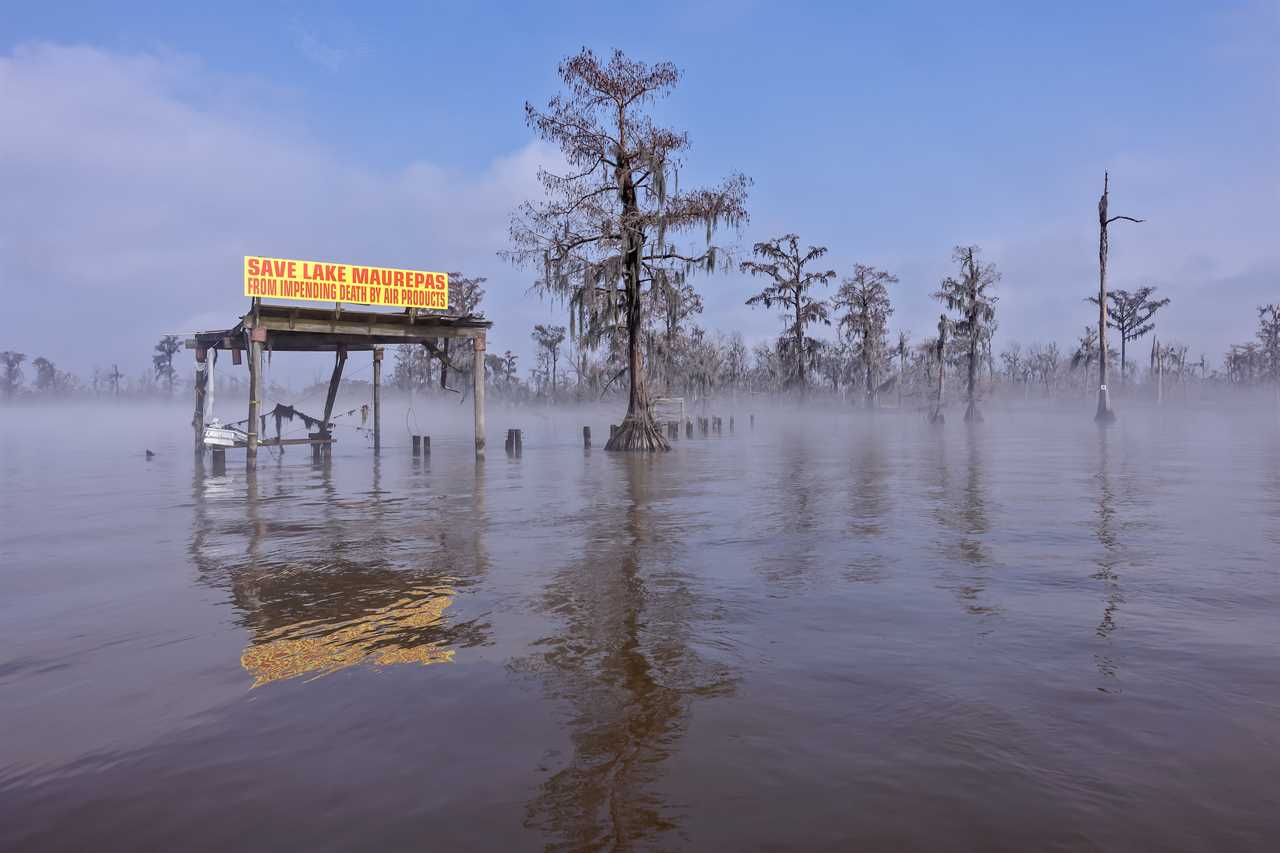
The project is to be tied to a $4.5 billion hydrogen plant further east that had the blessing of Democratic Gov. John Bel Edwards. But locals were not having it. After a tense meeting, the committee unanimously passed a 12-month moratorium on drilling wells for carbon sequestration. The following month the full parish council approved the ordinance.
Minutes after the September vote, parish resident Cody Lambert — clad in red workman’s overalls and cap with the Shell insignia on them — stepped up to the microphone.
Lambert worked for Shell, which runs a refinery in nearby Norco, La. But despite his employment at an international oil company whose website proclaims that carbon capture “will be essential for helping society to achieve net-zero emissions,” Lambert made it clear: Not in his backyard.
“Have we thought about the infrastructure necessary to avoid a catastrophic event?” Lambert said at the microphone. “What happens if a well blows out? What happens if ‘oh shit’ happens? Is there going to be money for our homes if something happens?”
“Those are very good questions,” council member Shane Mack replied. “I have those questions myself.”
Neither Air Products, Lambert nor Mack responded to emails or direct messages on social media seeking comment. The council’s vote eventually came to naught: Air Products sued and had the ordinance overturned, citing an agreement it signed with the state giving the company permission to drill carbon sequestration wells under Lake Maurepas.
Pipeline problems
It’s not just the wells that raise concerns about government oversight. Moving carbon dioxide from industrial sites to storage wells will require tens of thousands of miles of new pipelines, experts say.
While the U.S. has millions of miles of oil and gas pipelines, retrofitting them to carry CO2 is technically challenging and not under consideration. A small clutch of companies builds and operates CO2 pipelines, which are bigger than natural gas ones because the carbon dioxide must be condensed and transported at higher pressures.
Exacerbating the problem: One of the only companies operating a large CO2 pipeline system is facing one of the largest fines ever levied against a pipeline operator.
Denbury Resources operates a quarter of the nation’s CO2 pipelines with plans to expand. The oil and gas driller is leaning on carbon capture to hit its 2030 goal to remove more carbon emissions from the atmosphere than it produces — the climate holy grail. Its “assets across strategic locations” make it “attractive” for oil companies, the influential consulting firm Wood Mackenzie wrote. Denbury Resources was once a rumored acquisition target of ExxonMobil.
In a Dec. 13 presentation to investors, Denbury said it has the Gulf’s “only dedicated CO2 pipeline network,” at more than 900 miles. It estimated the region has 5 trillion metric tons of potential CO2 storage capacity and has announced plans to build four new carbon storage hubs in Louisiana and one each in Texas, Alabama and Mississippi. That would require expanding CO2 pipelines – including one running through the New Orleans area.
Yet Denbury in April paid the second-largest fine ever — nearly $3 million — from the federal Pipeline and Hazardous Materials Safety Administration for a 2020 carbon dioxide pipeline explosion in Satartia, Miss., that forced the hospitalization of 45 people and the relocation of 200.
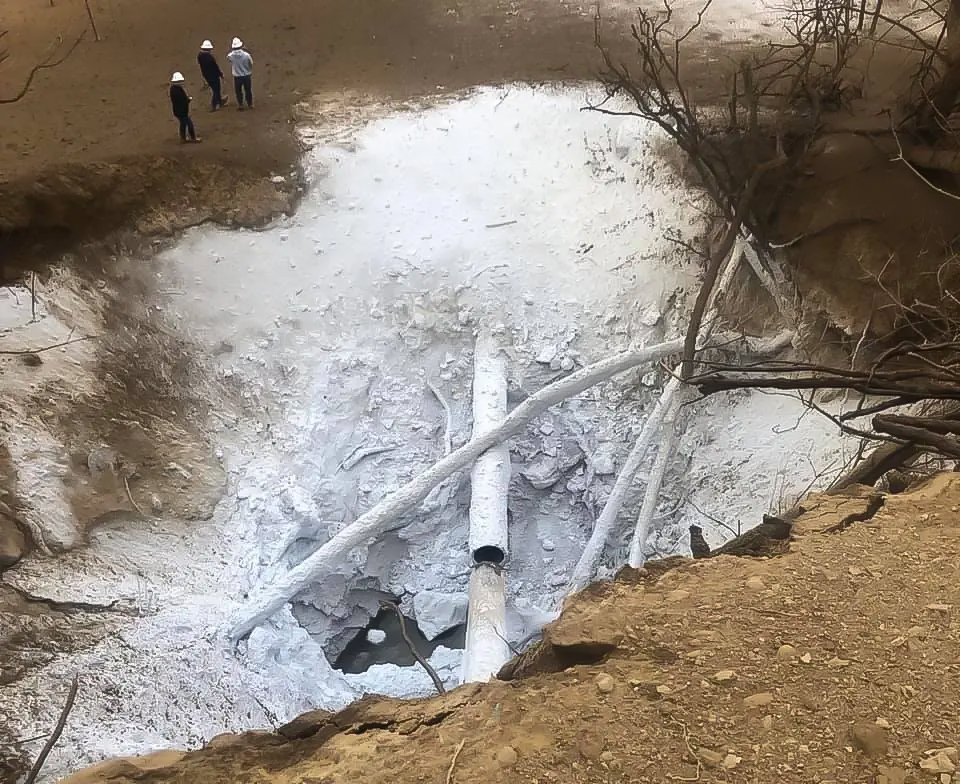
PHMSA, a Department of Transportation agency responsible for setting safety standards for pipelines, only last May began asking for information on best practices for lines carrying carbon dioxide. It doesn’t plan on getting a final rule out until October 2024.
The agency has some experience overseeing CO2 pipelines, agency spokesperson Samantha Keitt said, but it will need to train local emergency responders and persuade federal authorities to bolster staff to deal with the crush of new projects.
“PHMSA is working to ensure that it has the resources, including workforce, necessary to meet congressional mandates and other emerging safety issues, including those related to CO2 pipelines,” Keitt said. “Certainly with increased infrastructure will come increased demands on PHMSA’s resources and additional hires will be necessary.”
As illustrated by the Satartia explosion, the dangers are real. A pipeline carrying carbon dioxide is more likely to fracture than those carrying transportation fuels or natural gas, according to a report commissioned by the advocacy group Pipeline Safety Trust.
“Think of it as a zipper opening up and running down a significant length of the pipe following a rupture,” the report reads. “Along with releasing massive amounts of CO2 upon failure, these extreme ruptures can also hurl large sections of pipe, expel pipe shrapnel, and generate enormous craters.”
Safety advocates worry that companies racing to get government subsidies will put carbon dioxide pipelines in the ground before PHMSA finishes researching what types of materials and designs would best work for CO2 transit. In essence, the U.S. could have thousands of miles of pipelines in operation before the government lays down rules on the best way to build them, said Bill Caram, Pipeline Safety Trust’s chief executive.
“Once [PHMSA] gets the results from these R&D projects back, they're then to go and make new regulations saying what you need to build your pipeline, with this type of steel, with these types of valve, to keep it safer,” Caram said. “But they're prohibited from making those regulations apply to pipe that's already in the ground.”

While PHMSA is in charge of pipeline safety, less clear is which federal agency regulates the location of pipelines that cross state lines.
Mahmoud Abouelnaga, a solutions fellow at the environmental think tank the Center for Climate and Energy Solutions, says that lack of clarity is causing real-world problems. Two major projects planned for the Midwest would account for 3,500 miles of new CO2 pipelines, dramatically expanding the existing national network of 5,150 miles, Abouelnaga said.
The pipeline industry is split on the need for new federal authority to oversee pipeline safety, said Alex Herrgott, who leads Permitting Institute, a nonprofit that advocates for faster government action on infrastructure permitting. Some companies want such an agency to reassure investors about their ability to complete construction in antagonistic states at a time when pipeline-project abandonment is nearing 20 percent, he said. But Herrgott added that new federal oversight could come with “strings attached,” such as utilities imposing CO2 transportation fees.
“Before we put new regulatory frameworks into place we need to look two, three years into the future for what that would mean,” he said. “At present, there is not a single [carbon capture] project that has been upheld by a lack of regulatory framework.”
Seeking environmental justice
Light fare was on the May 24, 2022, menu at Dooky Chase’s, a white-table-clothed Creole culinary institution in the heart of New Orleans’ historic Black Treme neighborhood.
So was Energy Secretary Jennifer Granholm.
Monique Harden, the law and policy director at the Deep South Center for Environmental Justice, was one of 20 such Louisianans at the event in New Orleans, which has become a center of resistance to expansions of carbon capture infrastructure.
“She got an earful,” said Harden of Granholm. “She came to have a discussion. Everyone who was there got to have their piece.”
Harden said attendees were direct: Testing out nascent technology in their backyards was incompatible with justice. They said carbon capture would prolong the lifeline of facilities and industries that have left the Gulf Coast’s heavily Black and Latino communities more prone to asthma, heart disease and cancer.

Residents expressed concerns about storing CO2 underground, where it could leak into groundwater, and transporting it through pipelines that could burst, much like what happened in Satartia.
Harden said they felt heard. But she and others were dismayed by what appeared to be DOE’s answer — requiring applicants for federal funds to devise a “community benefits” plan outlining diversity efforts, engagement with community officials and residents, local hiring goals, and steps to ensure health and safety.
“You tell me what community benefits agreement is going to make this problem better. This really looks like punting the issue,” Harden said. “What the DOE is doing is catering to lobbyists who managed to get members of Congress to fall for this carbon capture and storage with tremendous tax incentives.”
Many people have “misinterpreted” the data on how effectively carbon capture works, said Jennifer Wilcox, principal deputy assistant secretary at DOE’s fossil energy office. For example, some studies have assessed the technology at a facility-wide scale when it was only used for a small period of time on one unit at an industrial site, Wilcox said.
Wilcox noted that DOE has a strict measure of success: The demonstration projects it is funding must hit a capture rate — the percentage of CO2 caught — of 95 percent. The department is also asking applicants to monitor co-pollutants like nitrogen oxide and particulate matter, a move that she said would improve transparency with communities skeptical of the technology.
But people in the shadow of industrial facilities worry about the moral hazard. Vague promises to slap carbon capture onto new fossil fuel infrastructure could be harmful if the technology doesn’t work as envisioned. And no matter the case, it amounts to a “fig leaf” to coal, oil and gas producers to continue producing and putting harmful pollution into the air, Harden said.
“Who wants that in their community? No one. But they are put in mostly Black communities here in the Gulf region,” Harden said. “It really just further entrenches the future of communities with pollution. You can't get more of a departure from an environmental justice goal than that.”
----------------------------------------
By: Ben Lefebvre and Zack Colman
Title: Democrats bet billions on carbon capture, but the government isn’t ready
Sourced From: www.politico.com/news/2023/05/16/carbon-capture-emissions-democrats-00087720
Published Date: Tue, 16 May 2023 03:30:00 EST






